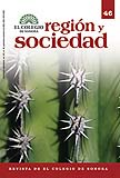Abstract
Given the importance of rabbit farming in Tlaxcala, particularly when compared to other Mexican rabbit producing states, this article describes a technical diagnostic of the activity. The purpose of this diagnostic was to analyze some of the available channels for marketing and sale, and to propose strategies to facilitate sales. In order to conduct this work, technical analyses were conducted on participating farms. These analyses were complemented by semi-structured interviews with randomly selected producers and key informants involved in the chain of production, as well as by periodic visits to locations where rabbit meat is sold. One result of this study is that the rabbit producers inTlaxcala use a predominantly extensive system of production, while incorporating some elements of semi-intensive or corporate systems. Some alternatives that could improve the marketing and sale of rabbit meat include: increasing the efficiency of product storage; creating distribution centers and points of sale; taking advantage of economies of scale; and differentiating the product that is sold to the consumer.
References
Camps, J. y J. C. de Pedro. 2001. Conejo: la carne sana y dietética. Ciclo internacional de conferencias en cunicultura empresarial. UACH.
FAO. 1999. El conejo: cría, sanidad y producción. Roma: FAO.
FAO–Base de datos estadísticos de la FAO (FAOSTAT). 2007. Base de datos. http://www.fao.org
García, J. C.,A. Pró M., C. M. Becerril P., M. E. Suárez, O. J. I. Cortés F., y M. J. González A. 1998. Diagnóstico de la producción y consumo de la carne de conejo en la población de Xocotlán,Texcoco, Estado de México. Memorias del primer Congreso de cunicultura de las Américas. Montecillo, México.
Haro, A. E. 1987. Seminario Situación y perspectivas de la cunicultura en México. UACH, Departamento de Zootecnia.
Herrera D., y Burgeois R. 1996. Enfoque participativo para el desarrollo de la competiti–vidad de los sistemas agroalimentarios. CADIAC. Cadenas y diálogo para la acción. San José, Costa Rica: Instituto Interamericano de Cooperación para la Agricultura.
Lebas, F., P. Coudert, R. Rouvier y H. Rochambeau. 1996. El conejo: cría y patología. Colección FAO: Producción y Sanidad Animal.
López, M., H. Lozada, R. Soriano, J. Vieyra, J. Cortés y L. Arias. 2000. Storing Centres as a Strategy for the Commercialisation of Rabbit's Meats in the Southeast of Mexico City. 7° World Rabbit Congress.Valencia.
Mendoza, B. 2001. Situación de la cunicultura en México. Ciclo internacional de conferencias en cunicultura empresarial. UACH.
Olivares, P. R. 2002. Investigación de mercado y análisis de la comercialización de la carne de conejo en la Ciudad de México y zona conurbada. Tesis de maestría en Ciencias, UACH.
Osechas, D., y L. M. Becerra Sánchez. 2006. Producción y mercadeo de carne de conejo en el estado. Trujillo, Venezuela. Revista Científica XVI (2): 129–135.
SAGARPA y Secretaría de Fomento Agropecuario del Estado de Tlaxcala. 2004. Evaluación Alianza Contigo 2003. Informe de evaluación estatal del Programa Fomento Ganadero.
Sanders,Arie, Angélica Ramírez y Lilián Morazán. 2006. Cadenas Agrícolas en Honduras. Desarrollo socioeconómico y ambiente. Escuela Agrícola Panamericana. Zamorano, Honduras. Documento presentado ante la IFPRI.
Santoyo, H., P. Ramírez P. y M. Suvedi. 2000. Manual para la evaluación de programas de desarrollo rural. México: Inca Rural, Michigan State University, UACH, CIESTAAM.
Solís, J. C. 2004. Comercialización del conejo en México. Precongreso del 6° Congreso Mundial de Cunicultura.Tlaxcala.
USDA. 2002. Agricultural Baseline Projections to 2011. Office of the Chief Economist. U. S. Department of Agriculture. Prepared by the Interagency Agricultural Projections Committee. Staff Report WAOB–2002–1. Washington.

This work is licensed under a Creative Commons Attribution-NonCommercial 4.0 International License.
Copyright (c) 2017 Rodrigo Olivares Pineda, Manuel Ángel Gómez Cruz, Rita Schwentesius Rindermann, Benjamín Carrera Chávez

